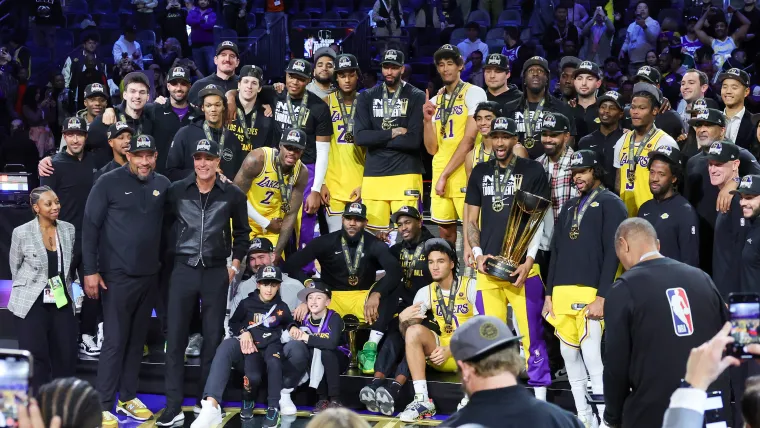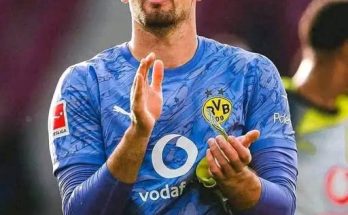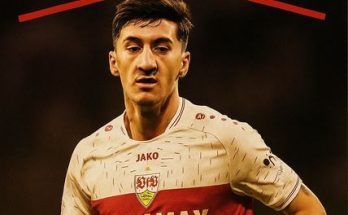The NBA landscape is always shifting, with teams making bold moves to position themselves for championship runs. The latest buzz swirling around the league centers on a blockbuster trade involving the Los Angeles Lakers and the Oklahoma City Thunder, one that could see the Lakers parting ways with a staggering $109 million father-son duo in a deal aimed at fueling the Thunder’s quest for an elusive NBA title. This predicted trade has sparked intense debate among fans, analysts, and insiders, as it involves some of the league’s most talented and high-profile players, and carries significant implications for both franchises.
The Lakers, a franchise steeped in championship history and glamour, are at a pivotal crossroads. Despite boasting a roster loaded with star power, the team has struggled to return to its former dominance in recent seasons. The pressure to compete in a loaded Western Conference and the NBA at large has led the Lakers’ front office to consider drastic changes to shake up their roster and create a more sustainable championship-contending core. Trading away two highly paid players, linked by the unique bond of being a father and son duo, for assets that can potentially reshape the future of the franchise represents a bold and strategic gamble.
At the heart of this proposed trade are the two players who represent a rare and compelling storyline in professional sports—a father and son both commanding substantial contracts and spotlight attention. Together, they earn a combined $109 million, a sum that reflects their undeniable talent, experience, and the high expectations placed on their shoulders. While the father has long been a veteran presence in the league, known for his leadership and clutch performances, the son has emerged as a rising star with tremendous potential and a skill set that has drawn comparisons to some of the game’s all-time greats. The synergy between them on the court is undeniable, but the Lakers’ willingness to part with this duo signals a larger vision aimed at restructuring their roster dynamics and financial flexibility.
The Oklahoma City Thunder, meanwhile, have been quietly building a team with an eye toward long-term success, combining young talent with savvy veteran acquisitions. They have yet to capture an NBA championship, despite coming close in the past decade, and the acquisition of such a high-caliber father-son tandem would signify their commitment to making a serious run at the title. The Thunder’s front office, known for its meticulous and forward-thinking approach, views this trade as an opportunity to add proven players who bring both skill and leadership, elevating their roster immediately while also providing mentorship to their younger core.
From a financial perspective, the trade is notable not only for the sheer magnitude of the contracts involved but also for how it could impact both teams’ salary cap situations. The Lakers, who have historically operated with one of the highest payrolls in the league, will gain much-needed cap relief by moving the father-son duo. This relief could open the door for them to pursue other free agents, sign role players to fill specific needs, or even re-sign key contributors who have played a pivotal role in their recent campaigns. Flexibility in the salary cap is a valuable commodity in the modern NBA, and this trade would provide the Lakers with the breathing room required to make strategic decisions in upcoming free agency periods.
Conversely, the Thunder will be taking on a significant financial commitment, but one they are willing to embrace for the potential payoff on the court. The team’s ownership and management are betting that the father-son duo’s combined talent, leadership, and chemistry will accelerate their championship aspirations. Additionally, the trade will send a strong message to the rest of the league that Oklahoma City is ready to compete at the highest level, leveraging established stars rather than solely relying on developing young talent. This move could also serve as a magnet for future free agents who want to join a team that has both promise and proven star power.
The Lakers’ decision to part ways with the father-son pair is not without controversy. Fans and commentators alike have expressed mixed emotions about losing such unique talent. The duo’s story has captured hearts, adding a deeply personal and human element to the often transactional nature of professional sports. The father’s veteran presence has been instrumental in mentoring younger players, while the son’s rapid development has excited the fanbase about the franchise’s future. However, the brutal reality of the NBA’s competitive environment often forces teams to make difficult choices in pursuit of success, and this trade could be a painful but necessary step in the Lakers’ evolution.
Analysts have also debated the potential return the Lakers might receive in exchange for the $109 million duo. Given the substantial financial commitment involved, the trade would likely include a combination of young prospects, draft picks, and perhaps established role players to balance the equation for the Thunder. The Lakers’ front office, led by experienced executives, is expected to negotiate aggressively to maximize the value they receive, aiming to rebuild their roster with players who fit their system and culture. This approach reflects a shift toward building a more balanced and versatile team rather than relying heavily on individual star power.
For the Thunder, integrating the father-son duo into their existing roster presents both opportunities and challenges. Chemistry on the court is crucial, and while the pair has a proven connection, meshing with a new set of teammates and coaching staff will require adjustment. The coaching staff will need to devise strategies that capitalize on the duo’s strengths while maintaining team cohesion and defensive stability. The Thunder’s roster construction will need to accommodate the duo’s playing styles, and the front office will have to manage expectations from both players and fans as the team embarks on this new chapter.
This trade also highlights broader trends within the NBA, where player mobility and big-money deals have become commonplace. The father-son element adds a rare narrative twist, reminding fans of the personal stories behind the contracts and statistics. It serves as a testament to the evolving nature of the league, where family legacies intertwine with business decisions, and franchises must constantly adapt to stay competitive. This deal could set a precedent for future transactions involving family members or closely connected players, as teams look for unique ways to build chemistry and maximize talent.
The ripple effects of this trade could extend beyond just the Lakers and Thunder. Rival teams will undoubtedly react by evaluating their own rosters and strategies, knowing that the Western Conference’s power balance could shift significantly. Other franchises may accelerate their rebuilding efforts or seek trades and signings to counter the Thunder’s new additions. The media frenzy and fan discussions will intensify as the trade rumors evolve into reality, with speculation about how the father-son duo will perform together on a different stage and what it means for their individual legacies.



